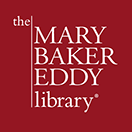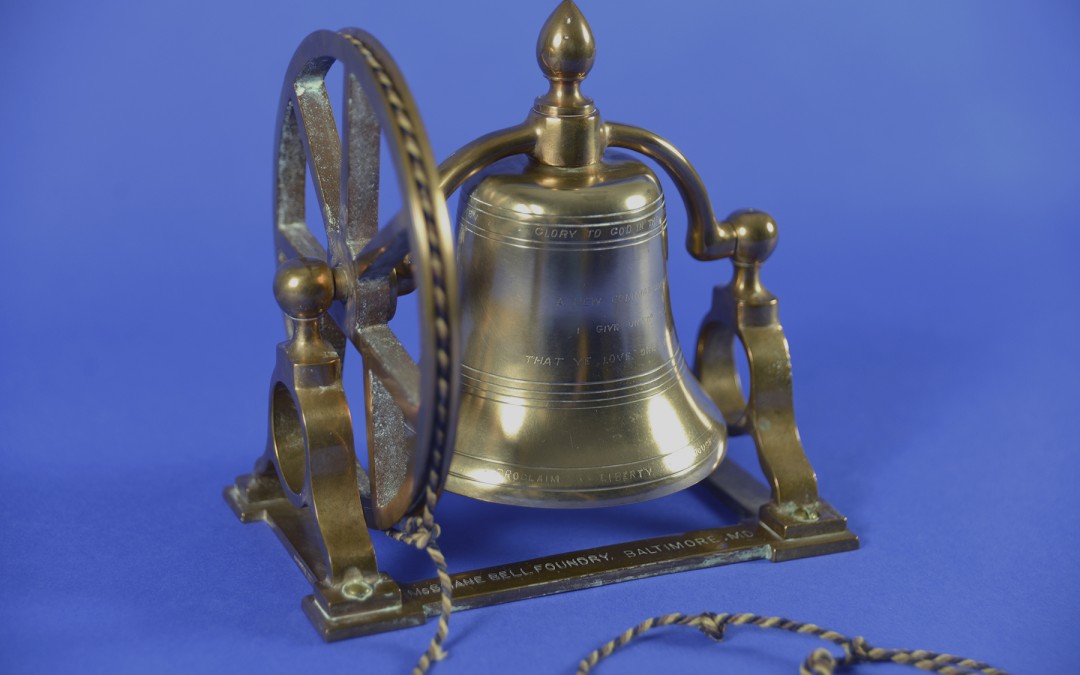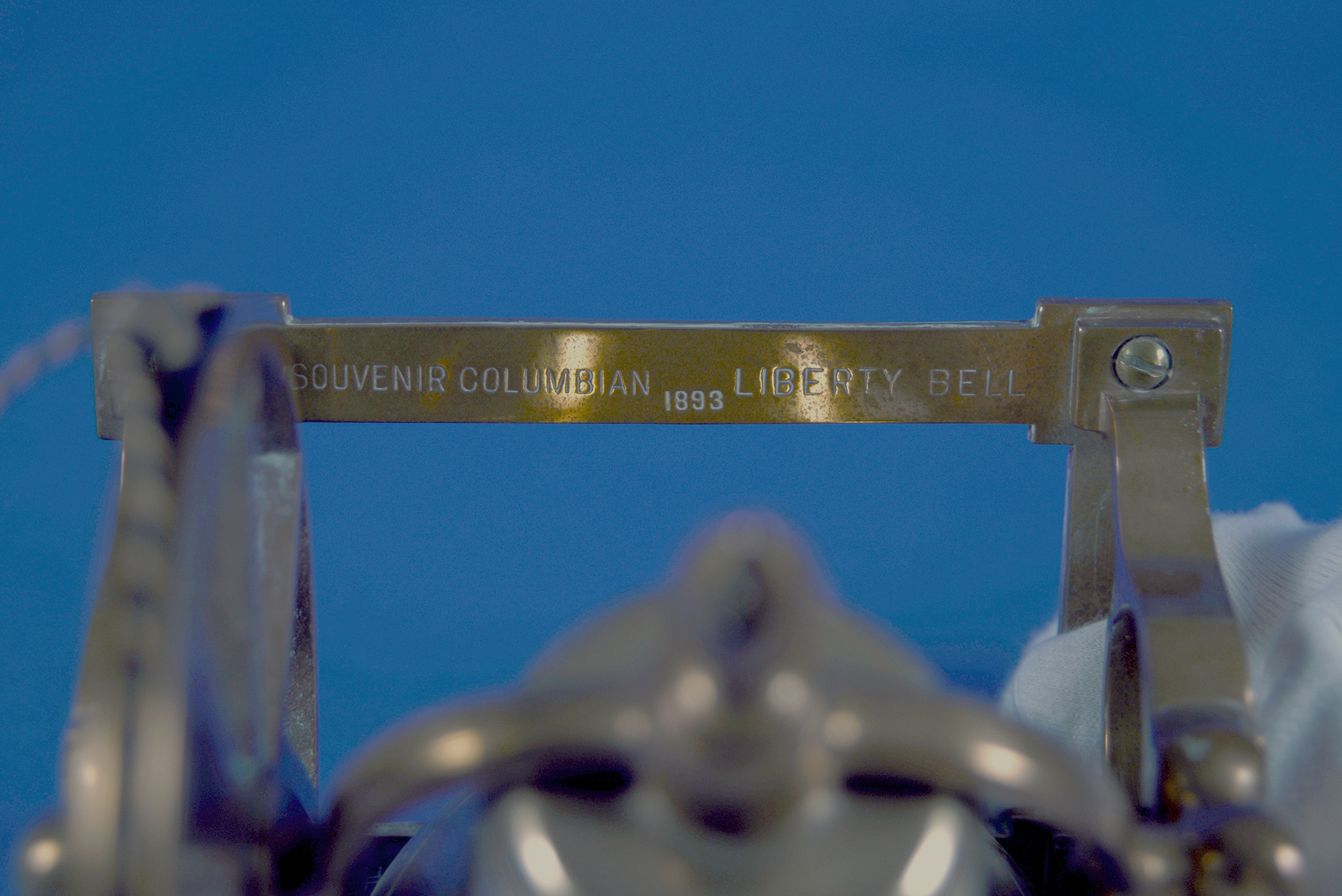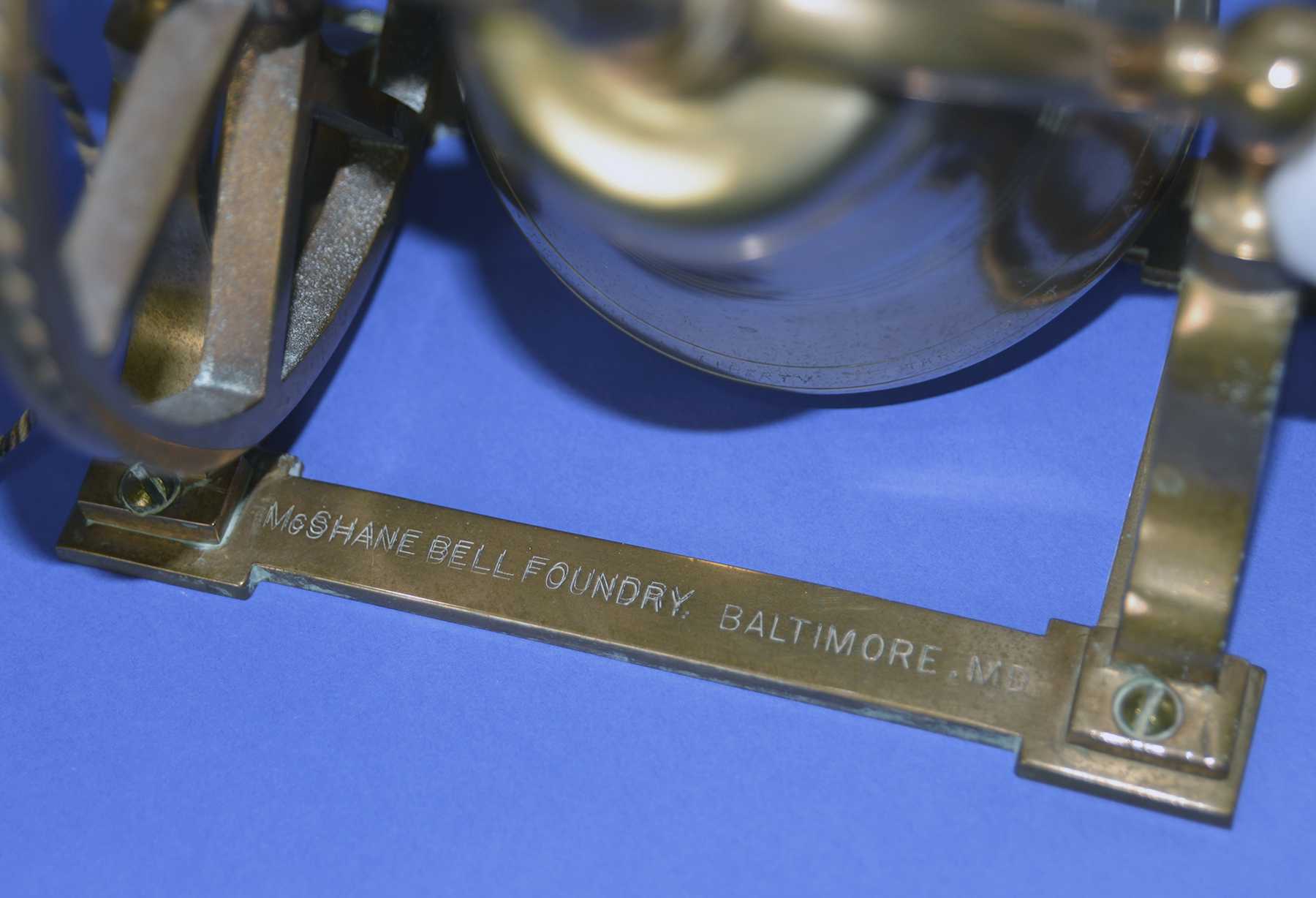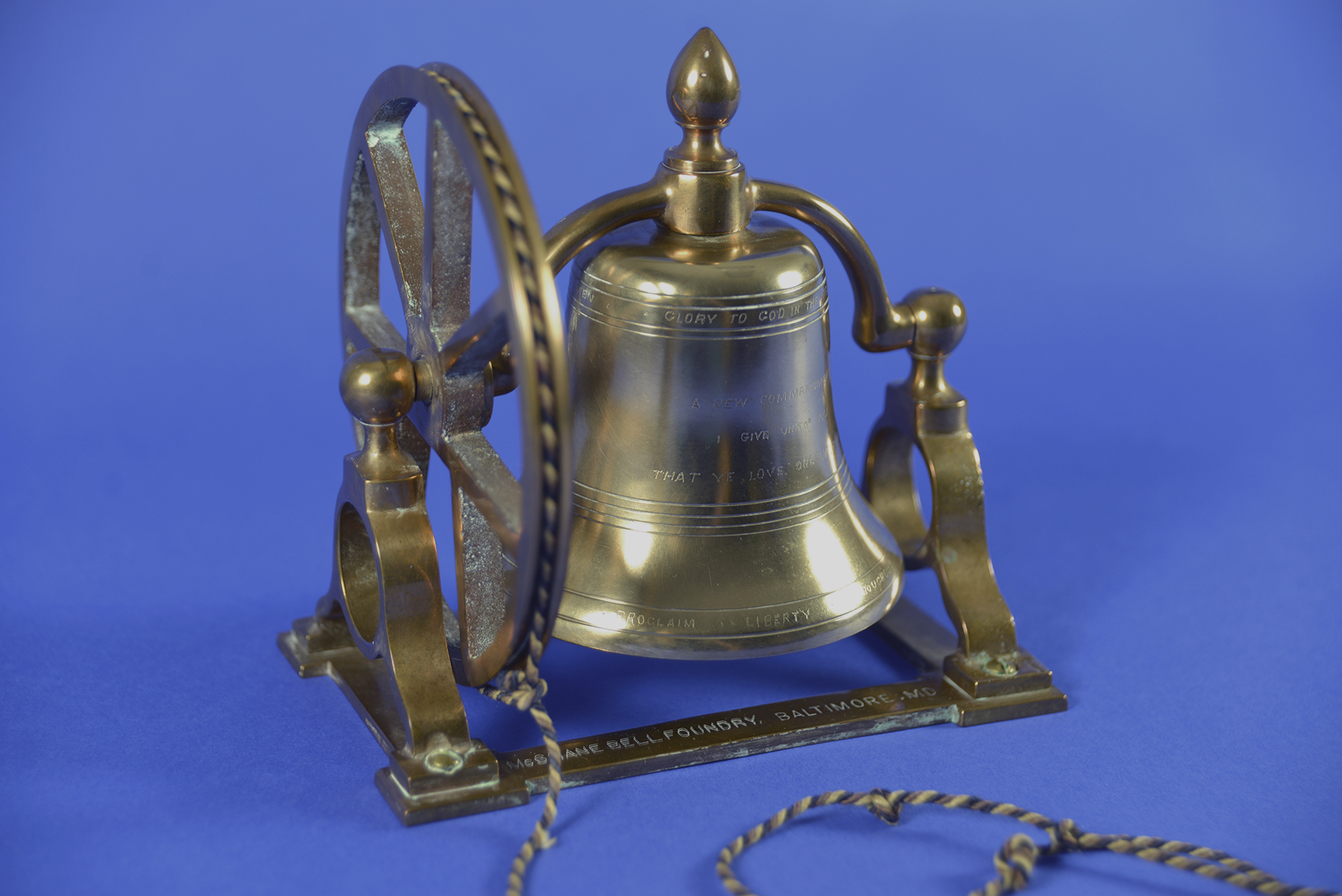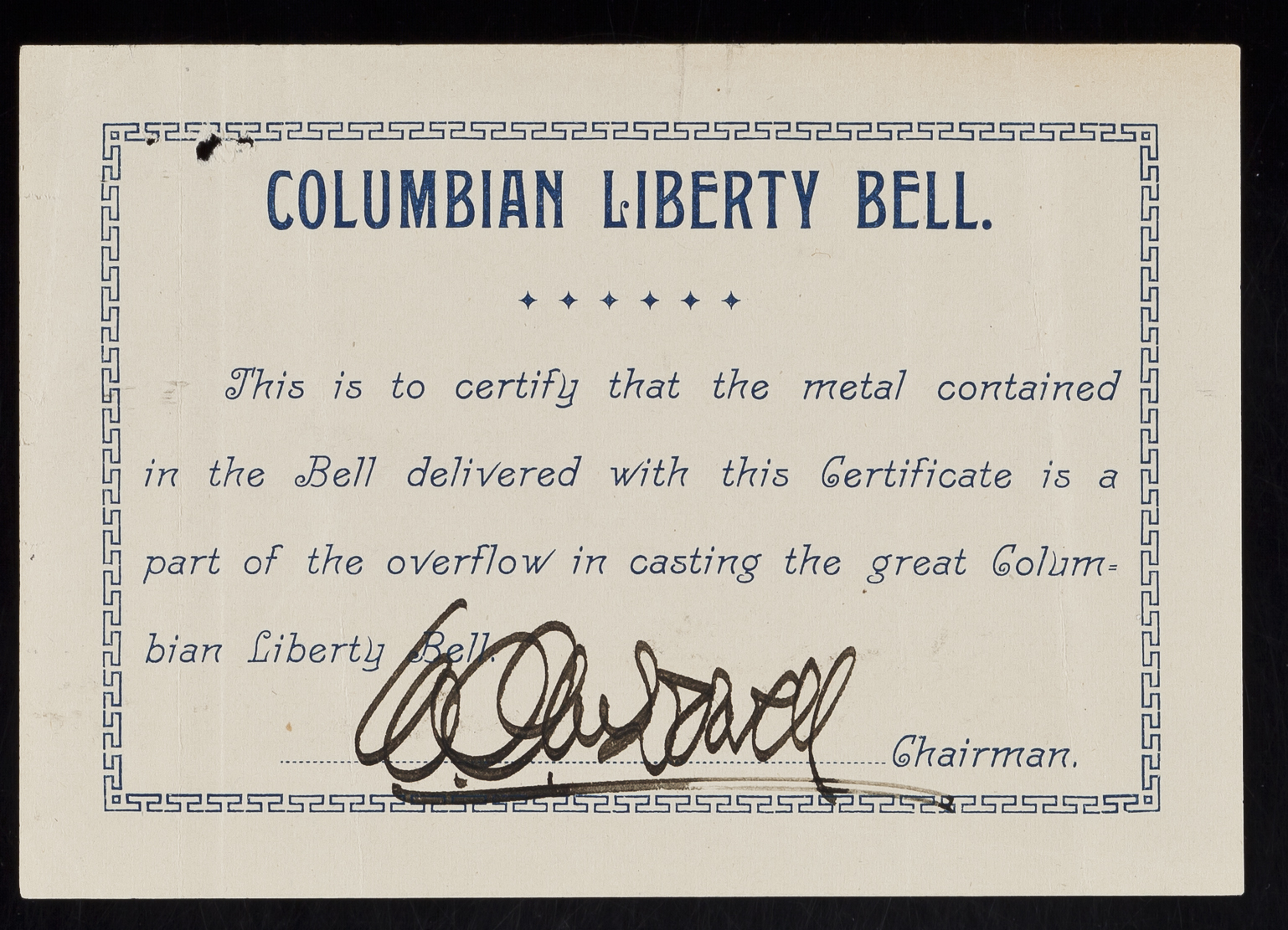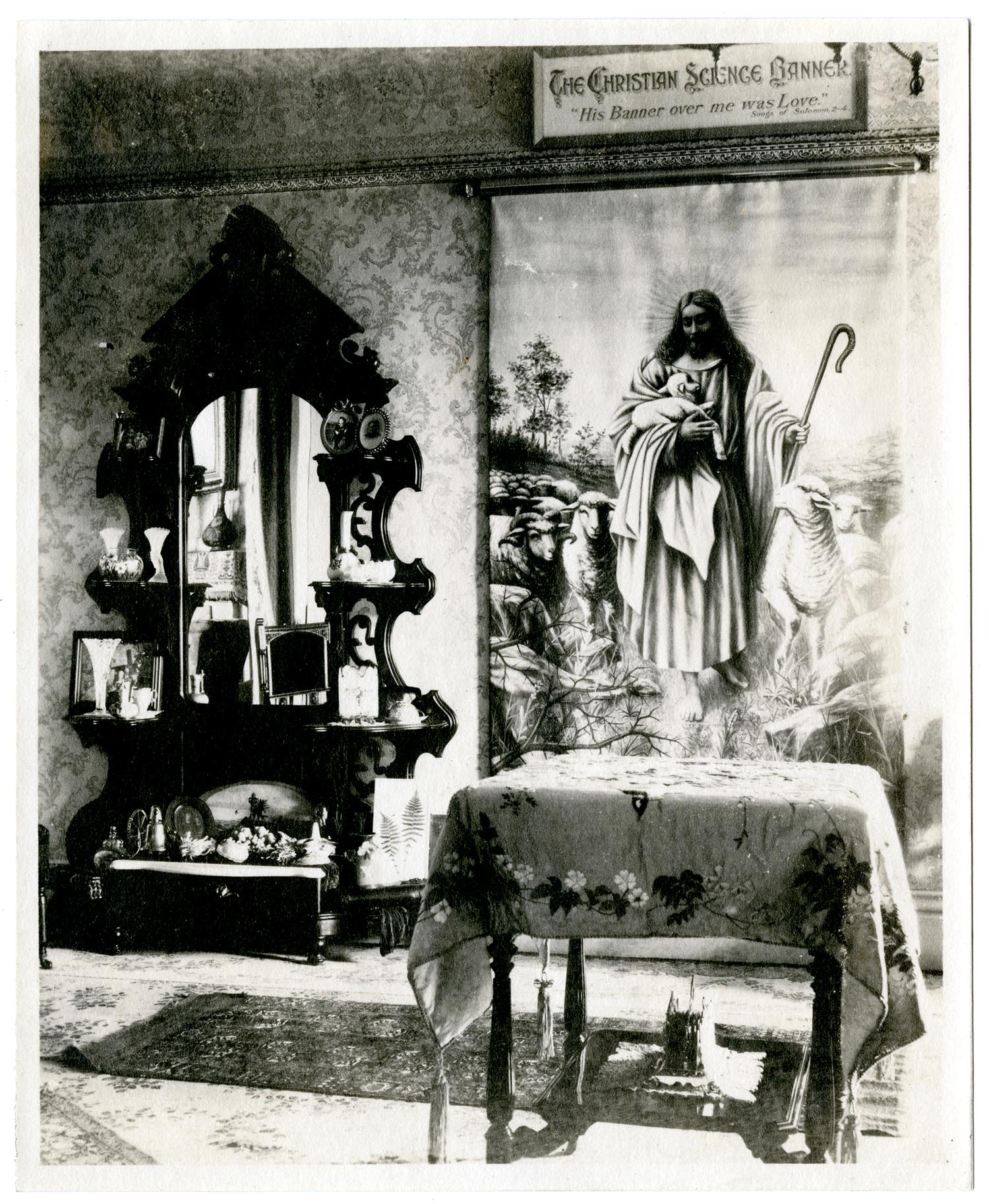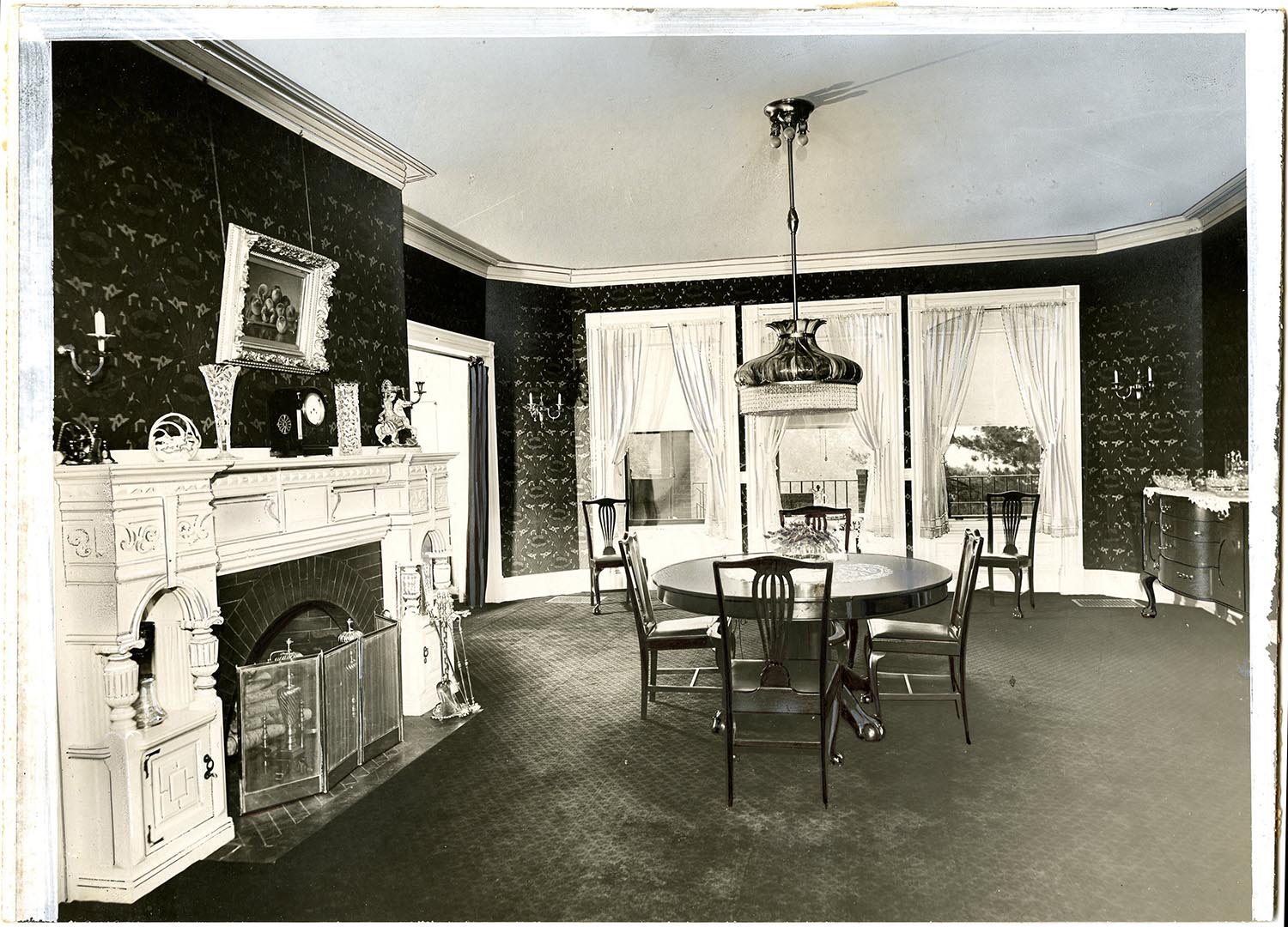Mary Baker Eddy displayed a small replica—she called it a “facsimile”—of the Liberty Bell in the parlor of her Concord, New Hampshire, home. This same small bell found its way to her final home in Chestnut Hill, Massachusetts. Where did it come from, and why was it important to her?
The Liberty Bell, an iconic eighteenth-century emblem of American patriotism, was prominently featured at the 1893 Columbian Exposition in Chicago, as a symbol of America’s love of freedom. Exhibits of the bell took several forms. The original bell was brought from Philadelphia, and a replica bell from Los Angeles was also displayed. The most ambitious and far-reaching effort was the creation of the seven-foot-high, 13,000-pound Columbian Liberty Bell. This new bell used metal contributed by thousands of people. The bell was cast on June 22, 1893, at Meneely Bell Company in Troy, New York.1 (It is interesting to note that the bells installed in the dome of the Extension of The Mother Church in 1906 were also cast by Meneely.)
Encircling it, at the top and bottom respectively, are these verses from the Bible:
GLORY TO GOD IN THE HIGHEST AND ON EARTH PEACE GOOD WILL TOWARD MEN.
PROCLAIM LIBERTY THROUGHOUT ALL THE LAND UNTO ALL THE INHABITANTS THEREOF.
The front of the bell is inscribed:
A NEW COMMANDMENT I GIVE YOU, THAT YE LOVE ONE ANOTHER. A.D. 1893. 2
(The original Liberty Bell bears only the passage from Leviticus.)
After the casting, metal remained, and from this excess the McShane Bell Foundry of Baltimore made souvenir bells.
Original souvenir bells are stamped (or double stamped) “McShane” and “1893.”
These small replicas were intended mainly for use in schools and libraries. William O. McDowell, the founder of the Daughters of the American Revolution (DAR)—which had led the project to create the Columbian Liberty Bell—saw the bells as a way to stimulate the education of children about patriotism. He produced a Liberty Primer to accompany the bells, designed to teach students important facts about “Creators of Liberty.” (For more information on the DAR’s leadership of this project, see http://www.dar.org/national-society/celebrate-125/look-back-marchapril-2014/. For more information on the purpose of the souvenir bells, see page nine of William McDowell’s Liberty Primer.)
Eddy’s Souvenir Liberty Bell 0.1195
Mary Baker Eddy received her souvenir bell as a gift from Effie Andrews, a prominent Christian Scientist in New York City who was later a student in her final class on Christian Science in 1898. In addition to the two Bible verses on the Columbian Liberty Bell, Eddy’s souvenir bell bears this engraving: A TRIBUTE TO REV. MARY BAKER EDDY. As Chairman of the Columbian Liberty Bell Committee, McDowell personally acknowledged Andrews’s purchase of the bell and sent her a certificate of authenticity.3
Certificate of authenticity IC 212.34.002
Upon receiving the bell, Eddy described her pleasure in a letter to Effie Andrews:
My dear friend
Your interesting letter and facsimile of the Liberty Bell were duly received. Accept my more than thanks. It has a thrilling tone articulating liberty on the basis of its grand mottoes. I was interested in the object of that Bell from the moment I learned about it from my dear friend Mrs. General Patterson’s sister of Washington D. C. Again I thank you; also please present my regards to all the members Secretary included of “The Daughters of the American Union” and wish them for me God speed. [The concluding sentence refers to the Daughters of the American Revolution (DAR).]4
As she explained to Andrews, Eddy had early taken an interest in the Columbian Liberty Bell. (On April 8, 1893, Eddy contributed two dollars “For the Bell.”) Evidence of that interest, and Eddy’s desire that her followers support the project, is found in the May 1893 issue of The Christian Science Journal:
NOTICE
Editor of Christian Science Journal:— You will oblige me by giving place in your Journal to the following notice. The idea and purpose of a Liberty Bell is pleasing, and can be made profitable to the heart of our country. I feel assured that many Christian Scientists will respond to this letter by contributions.
MARY BAKER EDDY5
The notice was followed by a detailed description of the project, including plans for a traveling exhibition of the Columbian bell. (This notice and accompanying letter from Mary Desha, a former vice president of the DAR, may be found in Eddy’s Miscellaneous Writings 1883-1896, 303-306, along with an editor’s note.) As planned, its first major American appearance after the 1893 exhibition was at the 1895 Cotton States and International Exposition in Atlanta. After that appearance, mystery befell it—strangely, the Columbian Liberty Bell vanished.6
As Mary Baker Eddy wrote to Andrews, she felt that the object of the Columbian Liberty Bell was to articulate “liberty on the basis of its grand mottoes.” The biblical mottoes from Leviticus, Luke, and John inscribed on the bell voice themes that figure prominently in Eddy’s Christianity, and she quoted the verse from Luke a dozen times in her published writings. For example, in Science and Health with Key to the Scriptures she explained: “God has built a higher platform of human rights, and He has built it on diviner claims. These claims are not made through code or creed, but in demonstration of ‘on earth peace, good-will toward men.’”7
The souvenir Liberty Bell sits on a what-not shelf at Pleasant View.
Eddy displayed her bell in the parlor at her home in Concord, New Hampshire. Later it sat on the mantle in the dining room of her home in Chestnut Hill, Massachusetts.
The souvenir Liberty Bell sits on the mantle in the dining room at Chestnut Hill.
- “Columbian Liberty Bell Cast,” The New York Times, June 23, 1893.
- Luke 2:14, Leviticus 25:10, John 13:34.
- William O. McDowell to Effie Andrews, 16 July 1893, IC 212.
- Mary Baker Eddy to Andrews, 10 August 1894, L10648.
- “Notice,” The Christian Science Journal, May 1893, http://journal.christianscience.com/shared/view/65wddjph8w?s=t.
- Jeff Lyon, “Humdinger of a Whodunit,” Chicago Tribune, October 1, 1995, http://articles.chicagotribune.com/1995-10-01/features/9510010262_1_huge-bell-dar-hub.
- Mary Baker Eddy, Science and Health with Key to the Scriptures, (Boston: The Writings of Mary Baker Eddy, 1906), 226.
